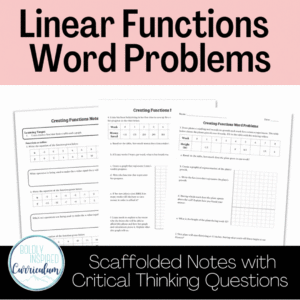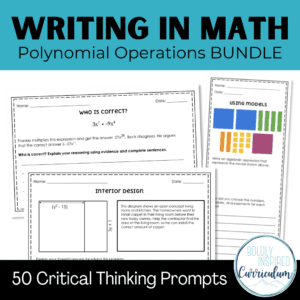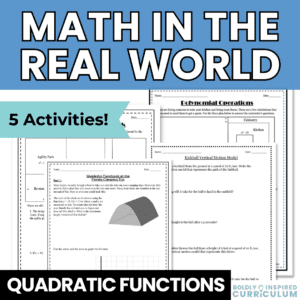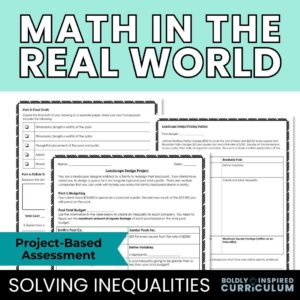Bloom’s Taxonomy verbs are frequently taught in educator preparation classes as a way to ensure that teachers vary the skills that students are being asked to show through different lessons.
This framework was created to categorize cognitive functions and use these categories to outline learning objectives. Vanderbilt University Center for Teaching has great information about the history and use of Bloom’s Taxonomy in modern classrooms.
Let’s dive into the types of activities that can be used for each level of this framework.

Table of Contents
Toggle1. Remember (recall facts and basic concepts)
This level is the most basic skill in the pyramid, but where your students will be practicing the most. This is the phase where they will practice skills and concepts repetitively until they are solving problems almost automatically.
The remember stage truly builds the foundation for the rest of the skills in the Bloom’s Taxonomy verbs pyramid. Your students must feel confident at a foundational level before they are ready to move up to higher order thinking.
Activities for Remember
- Worksheets
- Card sorts/matching
- Flash cards/math fact games
- Solving with whiteboards
- Exit tickets
- Escape rooms
2. Understand (explain basic ideas or concepts)
Understanding is just a step above remembering. Your students are starting to be able to explain their thinking and the problem solving process. These Bloom’s Taxonomy verbs urge students to dig deeper and step outside of their comfort zone.
Activities for Understand
- Class discussions
- Turn and talks
- Desmos discovery activities
- Digital transformations discovery
- Quizzes and tests
- Stations
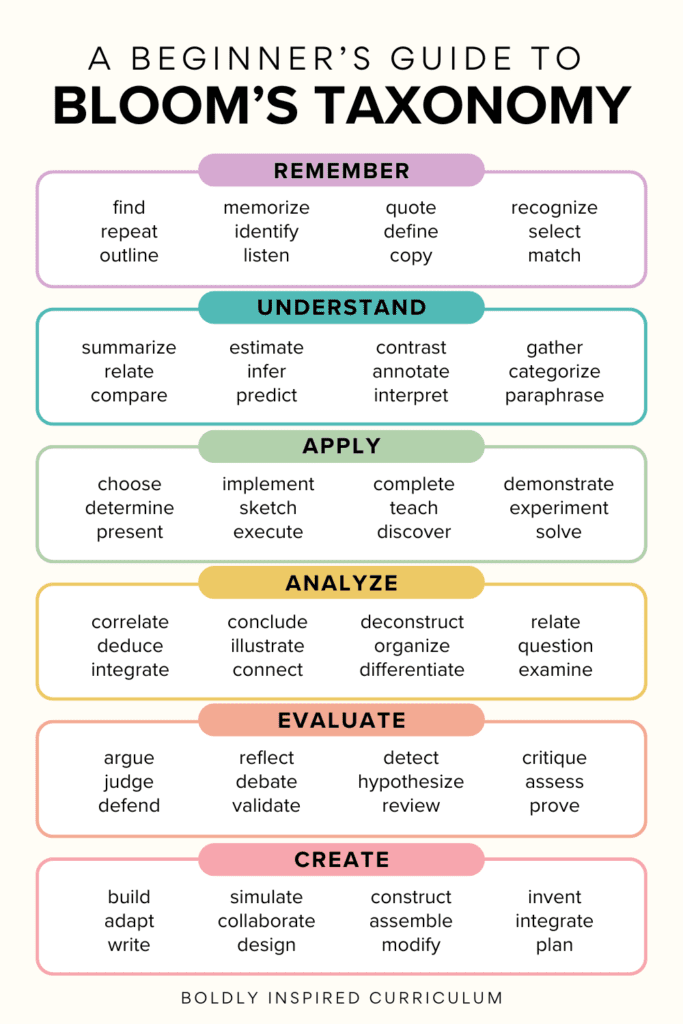
3. Apply (use information in new situations)
When you start asking your students to apply their learning, specifically through word problems, you might see a few trends. Your students might ask you to walk them through the whole problem or they might just put their pencil down and give up.
This is the perfect opportunity for you to give your students problem solving strategies and encourage them to work through the struggle.
Activities for Apply
- Drawing diagrams
- Explaining steps of a problem
- Word problems
- Presentations
4. Analyze (draw connections among ideas)
In many cases, the skills associated with analyzing are an extension of applying. When your students solve a word problem, you typically don’t want them to just get the answer and leave it at that.
Analyzing comes into play when students explain how they got their answer and what it actually means in that scenario.
Activities for Analyze
- Word problems
- Writing prompts with reflective questions
- Compare and contrast (venn diagrams)
5. Evaluate (justify a stand or position)
Justifying solutions is one of the most important real life skills that we can teach our students. It’s important to remember that this skill does not come naturally and takes time to learn.
Justifying solutions is a skill that they will need to know how to do in college (if they choose to continue their education). Your students will also need to defend their decisions in pretty much any job they have after they graduate from high school.
Activities for Evaluate
- Gallery walks
- Error analysis/providing feedback to others
- Real world applications with justifying reasoning
- Who is right?
- Self-assessments
6. Create (produce new or original work)
The ultimate way to show mastery of a concept is being able to make an original creation using the particular math skill.
One of my favorite activities for the creation tier is this solving inequalities real world application. In this activity, students create and solve inequalities to design a custom landscape for their clients within their budget.
Activities for Create
- Creating quiz or test questions about a topic
- Project based assessments
- Student facilitated discussions
Final thoughts about using the Bloom's Taxonomy verbs in your math classroom
Like other theories and taxonomies, Bloom’s can be overdone if teachers and administrators rely to heavily on sticking to these verbs and tiers of higher order thinking.
It is best to use these Bloom’s Taxonomy verbs to as a starting point to make your lessons and assessments more impactful. Remember: these ideas are meant to encourage quality over quantity. Your assessments can still be extremely telling with fewer questions of higher quality and critical thinking levels.



